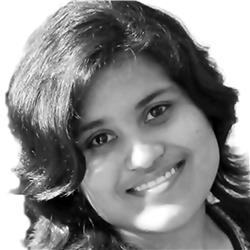What is Internet of Things?
Introduction
Every
one of us has heard the latest buzz, the Internet of Things (IoT)! This revolution in technology is even bigger than the industrial revolution!
This chapter will provide a basic understanding of what the IoT is and why are we so interested in this latest technology.
In order to understand what "IoT" is, we need to first understand the meaning of "Internet" and "Things". So let us start.
Internet

Figure1: Internet
Things

Figure2: Illustration of ‘things’
Internet of Things
Today we have many other devices apart from smartphones and computers
that can connect and communicate using the internet,
like garage door opener, internet-connected sprinklers, water quality
sensors, ATMs, electricity and utility meters, cars and other
vehicles, medical, and health monitoring devices, and many more.
All
the interconnection of these uniquely identifiable computing devices
within the existing internet, infrastructure can be termed as the
Internet of Things or the IoT in short form.
Hence, IoT can be defined as:
“A network of physical objects or ‘things’ that can interact with each other to share information and take action.”
or:
“The Internet of Things (IoT) is the interconnection of uniquely
identifiable embedded computing devices within the existing Internet
infrastructure.”

Figure3: IoT
Characteristics of IoT
These characteristics
are:
- The things should have a unique identification so that each of them can be distinguished from various objects in the network. If they don’t have unique identification then it becomes difficult for developers to work with.
- Things should be able to detect the presence of other objects, following a rule of autonomy. If they can do so then they can further interact and work accordingly.
- Things should be able to capture data autonomously.
- Since there are various communication protocols
and technologies that IoT devices will work with, things should be
interoperable among various communication technologies.
- Things
should have a service-based operation, such that if any two or more
objects are in the vicinity or in contact then they should be able to
communicate directly with each other and exchange information and data
if necessary.
- There should be cooperation among autonomous objects (things). If two autonomous objects can interact and cooperate with each other to accomplish any preset or necessary task, it can intensify the value of such an application manifold.
- Things should be able to operate at low power.
- Things should be contextual.
- Things should be programmable by the user.
- Things should have a fail-safe operation and most importantly secure.
Some facts about IoT
The following describes how large IoT Network Scale is:
- The number of mobile devices exceeds the number of people on Earth.
- Predictions are made that there will be 50 billion "things" connected to the Internet by 2020.
Therefore, a piece of knowledge about the IoT is important!
IoT Service Support
- Some advanced IoT services will need to collect, analyze, and process segments of raw sensor data and turn it in into operational control information.
- Some sensor data types may have massive sizes (due to a large number of IoT devices).
- IoT databases will be needed, that is where Cloud Computing support is needed.
- IoT data analysis needs to be done, that is where we will need Big Data support.
The influence of the IoT is everywhere!
2. Process
More users and machines can collaborate in real-time so more complex tasks can be accomplished in lesser time. And hence we have more collaborated and coordinated data.
3. Data
Collect data more frequently and reliably. Those results are more accurate for decision making.
4. Things
Things become more controllable therefore mobile devices and things become more valuable.
5. Economic Impact
Predictions have been made that the IoT has the potential to increase global corporate profits by 21% (in aggregate) by 2022.
- Asset Utilization: $2.5T
- Employee Productivity: $2.5T
- Supply Chain and Logistics: $2.7T
- Customer Experience: $3.7T
- Innovation: $3.7T
A total of $19 Trillion Market. That’s huge !!
- Machine-to-Machine (M2M) connections are increasingly important
- Person-to-Person (P2P) are as well
- Person-to-Machine (P2M)
- Machine-to-Person (M2P) still represents the majority of IoT’s economic value
- M2M: $6.4T: 45% of economic value.
- M2P or P2M: $3.5T and P2P: $4.5T together represent 55% of economic value.
Putting
it all together, in a nutshell, we can see that this technology is huge
and has enormous potential! This is and will create huge potential for
developers.
That's all from this chapter, hope you enjoyed it.
Author
Sukanya Mandal
0
978
626.3k
